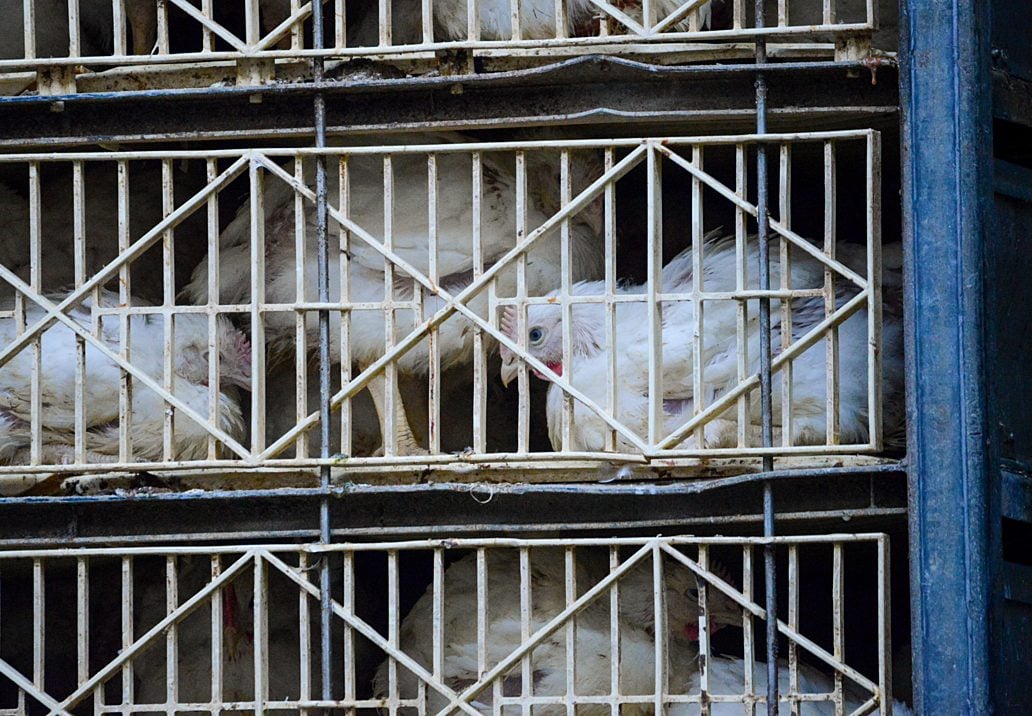The industrial farms that dominate the chicken industry pollute our waterways, primarily through manure. Runoff from fertilizer and animal waste containing nutrients like nitrogen and phosphorus can end up in surrounding bodies of water—and an excessive amount of these nutrients leads to toxic algal blooms and a depletion of oxygen in the water. This process creates what are known as “dead zones,” areas devoid of life.
These impacts are alarming in the Chesapeake Bay, where one billion chickens and turkeys are farmed each year. According to a recent study, the poultry industry in this region produces 5.7 billion pounds of manure and pollutes the Bay with 12 million pounds of nitrogen annually.
There are two to four times more nutrients like nitrogen and phosphorus in manure produced by chickens than in that of other farmed animals. Most U.S. chicken farms are intensive operations raising at least 660,000 birds each year. Annually, a farm of that size produces 3,300 tons of manure with 72,000 pounds of nitrogen.


